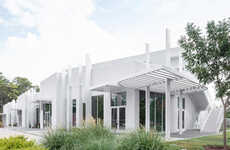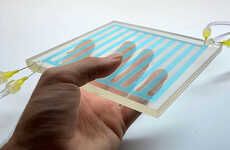
This Building Material is Designed to Help Keep Buildings Cool
Katherine Pendrill — December 7, 2015 — Eco
References: web.stanford.edu & fastcoexist
Researchers at Stanford University's Ginzton Laboratory recently developed an innovative material that helps keep buildings cool. As of right now, A/C accounts for about 15 percent of the total electricity demand in the US. This new building material could help to stem the need for A/C and ultimately reduce electricity consumption.
The new technology was developed by Aaswath Raman as a means of trying to keep buildings cool from the inside. Raman's building material is an ultra-reflective surface made from layers of silicon dioxide, hafnium oxide and silver. The material works to bounce heat off of a building and back into the atmosphere. By preventing the building from heating up in the first place, the technology ultimately reduces the need for subsequent cooling.
Although the technology has yet to be put to use, the coating could help to keep buildings cool and reduce our dependence on air conditioning.
The new technology was developed by Aaswath Raman as a means of trying to keep buildings cool from the inside. Raman's building material is an ultra-reflective surface made from layers of silicon dioxide, hafnium oxide and silver. The material works to bounce heat off of a building and back into the atmosphere. By preventing the building from heating up in the first place, the technology ultimately reduces the need for subsequent cooling.
Although the technology has yet to be put to use, the coating could help to keep buildings cool and reduce our dependence on air conditioning.
Trend Themes
1. Heat-deflecting Building Materials - Innovative materials designed to bounce heat off buildings and reduce the need for air conditioning.
2. Energy-efficient Cooling Solutions - Technologies focused on reducing electricity consumption by minimizing the need for A/C in buildings.
3. Sustainable Architectural Innovations - Developments in building materials that promote energy efficiency and reduce environmental impact.
Industry Implications
1. Construction Materials - Opportunity for manufacturers to produce and market heat-deflecting building materials.
2. Energy Management - Potential for companies to develop energy-efficient cooling solutions for residential and commercial buildings.
3. Architectural Design - Demand for architects to integrate sustainable building practices and materials into their designs.
2.6
Score
Popularity
Activity
Freshness























